By the way my father was an Electrical Contractor from the time I was 12 years old and so he hired me summers to work for him until I was 17. I think he thought that teaching me his trade would be helpful in life and often it was because I had been exposed to all kinds of building both residential and commercial. So, this often was helpful many times during my life including building my father's retirement home, my friend's homes and my own along the way. And even now I find I can repair almost anything in my own home because of my experiences, electrical, carpentry, plumbing or whatever. These are good skills to have in life and save you a lot of money too. So, all I have to do is to know what needs to be done then go to Home Depot or Ace Hardware and buy whatever I need to fix anything around my home or friend's homes or relatives homes.
begin partial quote from:
https://intuitivefred888.blogspot.com/2023/06/purple-and-jonathan-through-search.html
For he knew that electricity on earth in the United States cycles primarily to homes via three wires(two hot and one neutral). Electricians often paint the one they choose to be the neutral white at the panel so no one gets confused and hit with 220 volts by accident. If you take one hot and one neutral you get 110 at 60 cycles per second. But it is usually transformed from 1000 volts down to 220 by the big (usually green) transformer on the telephone pole or big green square or rectangle thing on the ground if your wiring comes in from underground cables.
end quote.
I was thinking that I know a lot about single Phase 220 that is stepped down usually from 1000 volts at the power pole (or underground) by a transformer to 220.
I know a lot less about double phase and other forms of 220 so here is something about all that.
begin quote from:
https://daelim-electric.com/what-is-the-difference-between-1-phase-2-phase-and-3-phase-power/
What is the Difference Between 1 Phase 2 Phase and 3 Phase Power?
About the difference between three-phase power and two-phase power, the difference between three-phase power and single-phase power, the delta connection and Y-connection of three-phase power loads, the three-phase four-wire system and three-phase five-wire of three-phase power meters System, let’s get to know it together.
Pad-mounted Transformer
Dry-type Transformer
Dry-type Transformer
Table of Contents
Definition of 1 Phase 2 Phase and 3 Phase Power
Three-phase power:
It is composed of three phase wires.
Mutual voltage: 380V.
Application: Three-phase motor
Two-phase electricity:
It consists of two-phase wires.
Mutual voltage: 380V.
Application: AC welding machine
Single-phase electricity:
It is composed of a phase wire and a neutral wire.
Voltage: 220V
Application: Household appliances.
Three-phase Power: when the coil rotates in a magnetic field, the wire cuts the magnetic field line to generate an induced electromotive force, and its changing law can be represented by a sinusoidal curve. If we take three coils and place them at an angle of 120 degrees apart in space, the three coils still rotate at the same speed in the magnetic field, and three induced electromotive forces with the same frequency will be induced. Since the three coils are 120 degrees apart in space, the current generated is also a three-phase sinusoidal change, which is called a three-phase sinusoidal alternating current. Industrial electricity uses three-phase electricity, such as three-phase AC motors.
The voltage between any two phases is 380VAC, and any phase-to-ground voltage is 220VAC. Divided into A phase, B phase, and C phase. The lines are represented by L1, L2, and L3.
(Note:There are 660VAC and 6000VAC power supply for three-phase alternating current due to different purposes).
Get the lastest daelim transformer product cataloge now
The difference between three-phase power and single-phase power
The power generated by the generator is three-phase, and each phase and its neutral point of the three-phase power supply can form a single-phase loop to provide users with electric energy.
(Note that the AC circuit cannot be called positive or negative here, it should be called the line end (also called the live wire) and the neutral wire (also called the neutral wire.)
To Know all about the Electric Pole Transformer
According to regulations, the neutral point of a 380 volt (three-phase) civil power supply should not be grounded at the entrance end. A ground wire is also connected to the three-core power jack.
(Grounding at the transformer end. This grounding is to take into account that the floating point cannot cause a point higher than the power supply voltage. The grounding of the user end and the grounding of the transformer end have a certain resistance in the earth)
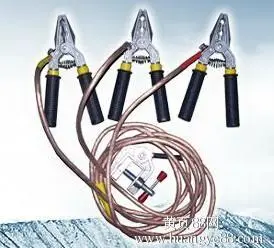

Get the most complete Pad Mounted Transformer information now!
This is to take into account the realization of the function of the leakage protector. If the neutral point of the power supply is directly grounded, the leakage protector will lose its function and cannot protect the short circuit of the human body and electrical equipment.
The working principle of the leakage protector is: if the human body touches the line end of the power supply, namely the live wire, or the internal leakage of electrical equipment, the current flows from the live wire to the earth through the human body or the housing of the electrical equipment, and does not flow through the neutral wire, live wire and The current of the neutral line will be unequal, and the leakage protector will immediately trip to protect the safety of personal and electrical appliances after detecting this part of the current difference. Generally, the differential current is selected to be tens of milliamperes。
Connection of three-phase Power Load
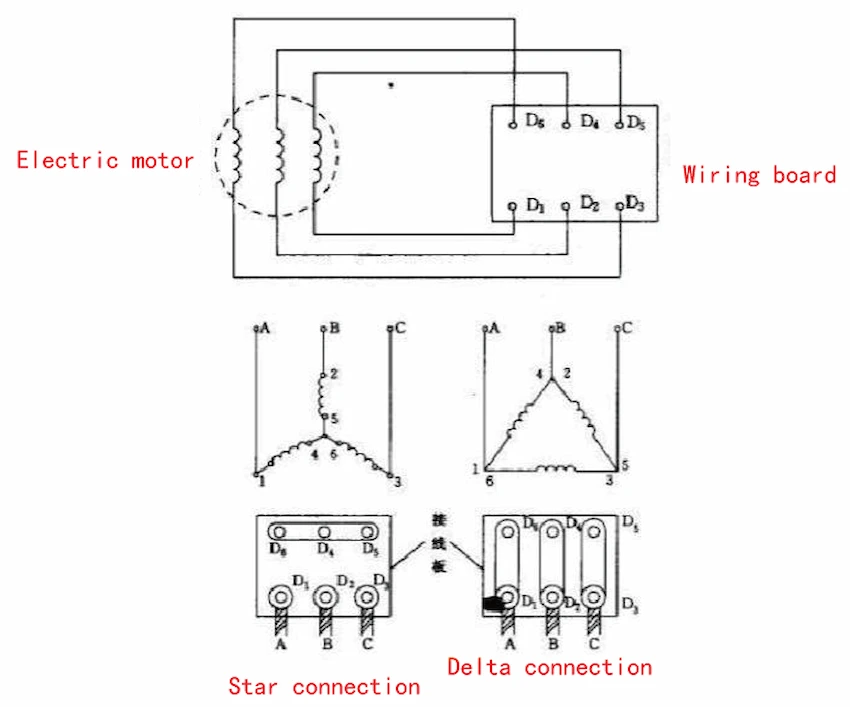
Preventive measures for tripping of three-side switch of 110kV main transformer
Divided into delta connection and Y-shaped connection.
The load leads of the delta connection are three live wires and one ground wire. The voltage between the three live wires is 380V, and the voltage of any live wire to the ground wire is 220V;
The load leads of the Y-connection method are three live wires, a neutral wire and a ground wire. The voltage between the three live wires is 380V, and the voltage of any live wire to the neutral wire or the ground wire is 220V.
The total power of a three-phase electrical appliance is equal to the voltage of each phase multiplied by the current of each phase and then multiplied by 3, that is, the total power = current × voltage (220V) × 3 (W = U × I × 3)
Three-phase Four-wire System
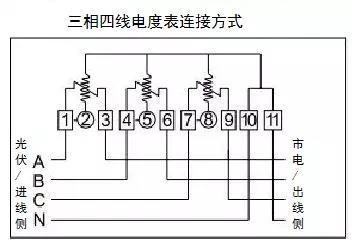
Connection Mode of Working Winding of Three-phase Transformer
In the low-voltage distribution network, the transmission line generally adopts a three-phase four-wire system, of which three lines represent the three phases of A, B, and C, without splitting, and the other is the neutral line N。
In the 380V low-voltage power distribution network, the N line is set up in order to obtain the 220V line-to-line voltage from the 380V phase-to-phase voltage. In some cases, it can also be used for zero-sequence current detection to monitor the three-phase power supply balance
Repeated grounding: Regardless of N wire or PE wire, repeated grounding must be used on the user side to improve reliability. However, repeated grounding is only repeated grounding. It can only be connected together at the grounding point or close to the grounding point, but it does not mean that it can be connected together at any position, especially indoors. This must be remembered, and pay attention to whether your friend has violated it!
Mobile Transformer | Mobile Substations | Mobile Substation Manufacturers
A, B, C, N and PE wire
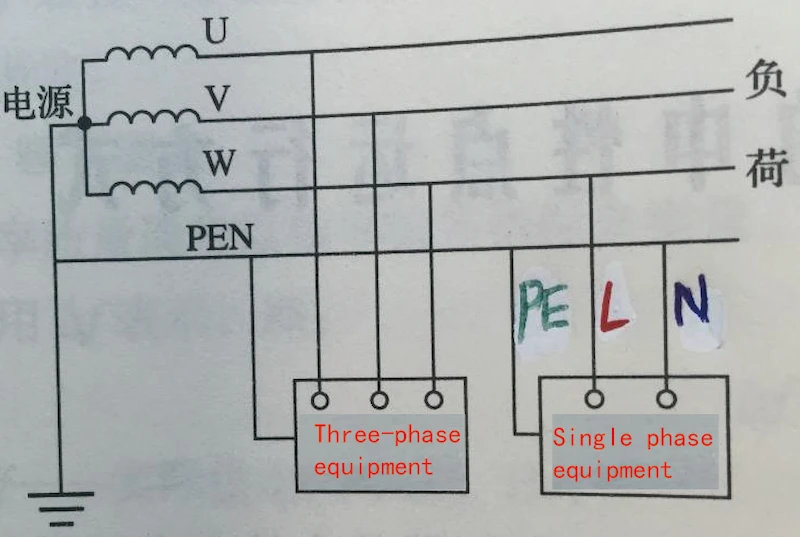
Calculation Method of the Number of Turns of Power Transformer Core
It is best to use standard and standardized wire colors in the application: A wire uses yellow, B wire uses blue, C wire uses red, N wire uses brown/blue, and PE wire uses yellow-green.
The three-phase five-wire system refers to the A, B, C, N and PE wires. Among them, the PE wire is a protective ground wire, also called a safety wire, which is specially used to ensure the safety of electricity use, such as the equipment casing. The PE line is connected to the N line at the power supply transformer side, but it must not be used as a neutral line after entering the user side, otherwise, it will be no different from a three-phase four-wire system after confusion.
However, since this kind of chaos makes people lose their vigilance, it may be more prone to electric shock accidents in practice. Now the power supply for residential houses has been stipulated to use a three-phase five-wire system. If yours is not, you can request rectification.
What is the no load losses of transformer?What is the short-circuit loss of the transformer
Three-phase five-wire system

How to calculate the power losses of the transformer, the calculation method of the transformer iron losses and copper losses power
The three-phase five-wire system includes three phase wires (A, B, and C wires), a neutral wire (N wire); and a ground wire (PE wire).
The neutral line (N line) is the neutral line. When the three-phase load is symmetrical, the vector sum of the current flowing into the neutral line of the three-phase line is zero, but for a single-phase, the current is not zero. When the three-phase load is asymmetrical, the current vector sum of the neutral line is not zero, and a voltage to the ground will be generated.
The three-phase five-wire system is divided into TT grounding mode and TN grounding mode, and TN is specifically divided into TN-S, TN-C, and TN-C-S three modes.
Understanding Live Front Three Phase Pad-Mounted Transformer
TT grounding method
The first letter T means the neutral point of the power supply is grounded, and the second T is the grounding of the metal casing of the equipment. This method is commonly used in high-voltage systems, but it is not suitable for low-voltage systems with large-capacity electrical appliances.
1. TN-S grounding method: The letter S means that N is separated from PE, the metal shell of the equipment is connected to PE, and the neutral point of the equipment is connected to N. The advantage is that there is no current in PE, so the potential of the metal casing of the equipment to the ground is zero. Mainly used for data processing, precision detection, and power supply system for high-rise buildings.
2. TN-C grounding method: The letter C means that N and PE merge into PEN, which is actually a four-wire power supply method. Both the neutral point of the device and the metal shell are connected to N. Since the three-phase unbalanced current and harmonic current flow when N is normal, the metal casing of the equipment normally has a certain voltage to the ground, which is usually used in general power supply places.
3. TN-C-S grounding method: part of N is separated from PE, which is a four-wire half system power supply method, which is used in places with poor environment. When N and PE are separated, they are not allowed to be combined.
What is The Alarm Temperature of The Dry-type Transformer?
What is 3 phase power?
Electricity is similar to water, so let me explain the phenomenon of water:
The current is similar to the water flow, and the voltage is also called the potential difference. It is similar to the water level difference. Two water bottles are used to connect them with a thin tube.
If two bottles are placed on the same level, there will be no water flow in the thin tube, but if one bottle is raised, water flow will be generated, that is, the water flow will flow from the high bottle to the low bottle.
For example, 3 bottles of ABC are used, and then 3 thin tubes are used to connect the 3 bottles respectively (that is, to form an angular connection). flow, B also flows to C.
If C is raised by 20CM, it is found that A flows to BC, but C flows to B. The reason is that water flows from high to low.
The current of the alternating current changes in positive and negative directions, just as the bottle moves up and down on a level, making the direction of the water flow in the water pipe change positive and negative.
Three-phase electricity, such as ABC 3 bottles are moving up and down periodically, but they do not move up and down at the same time, but staggered by 1/3 of the change cycle, so that there will be differences between ABC and 3 from time to time. The potential difference that causes the connected load to generate current.
This is the reason why three-phase electricity can energize the load without using 0 wire.
Three-phase alternating current is a form of transmission of electrical energy, referred to as three-phase electricity. A three-phase AC power supply is a power supply composed of three AC potentials with the same frequency, the same amplitude, and a phase difference of 120° from each other.
Three-phase alternating current has many uses, and most of the alternating current electrical equipment in the industry. For example, electric motors use three-phase alternating current, which is often referred to as three-phase four-wire system. In daily life, single-phase power is often used, also known as lighting power.
When using lighting electricity for power supply, use one of the three-phase electricity to supply power to the electrical equipment. For example, household appliances, and the other wire is the fourth wire among the three-phase and four-wire, that is, the neutral wire, which is drawn from the neutral point of the three-phase electricity.
Classification and function of transformer’s dielectric loss
what is 2 phase power?
Two-phase power refers to 220-volt single-phase power;
Two-phase power means that the rated voltage of the electrical appliance is 380 volts, and it needs to be connected to two phase wires, that is, two live wires.
Causes of Oil Leakage in Oil-immersed Transformers
What is single phase power?
Single-phase power is a form of power transmission consisting of a single live wire and a neutral wire, and there will be a third wire (ground wire) when necessary.
Generators that can generate potentials with equal amplitude, equal frequency and 120° phase difference are called three-phase generators;
A three-phase power generator is used as a power source, which is called a three-phase power supply;
A circuit powered by a three-phase power source is called a three-phase circuit. U, V, W are called three-phase, and the voltage between the phases is the line voltage, and the voltage is 380V.
The phase voltage between the phase and the center line is called the phase voltage, and the voltage is 220V.
The difference between three-phase power supply and single-phase power supply: the power supply from the generator is three-phase, and each phase of the three-phase power supply and its neutral point can form a single-phase loop to provide users with power energy.
Note that the AC circuit can not be called positive or negative, it should be called the line terminal (called the live wire in the civil electricity) and the neutral wire (called the neutral wire in the civil electricity).
Maintenance Procedures for Pad Mounted Transformers
Does the three-phase power change have to be the same transformer?
The alternating current on the same grid has the same voltage phase. Therefore, the neutral lines of multiple transformers on the same power grid (National Grid) can be used with each other. And the voltage between the live wire and the neutral wire of any transformer is 220v.
However, when used in this way, the live wire and the neutral wire are often separate, and there is a great concern for communication lines such as TV sets and radios, which are generally not allowed by the country and the power supply.
In general, the neutral line (the neutral point of the secondary side) is repeatedly grounded with the ground line, which plays a double protective role, and its main function is to be used in the working circuit of the equipment.
You need to know that the neutral line entering the ground is sent to the user in parallel with the three-phase line as the main line. Under normal circumstances, there should be no electricity on this neutral line. Once it is short-circuited, it will be charged.
Therefore, if two transformers share a line, it means that there is current from the loop, which will cause electromagnetic induction.
Just because one of the transformers does not have a good grounding below 4 ohms, there is no good loop. Once there is leakage between the equipment and the shell, it is dangerous if there is no tripping.
The neutral lines of different systems must not be borrowed and used each other. If the neutral point of the No. 1 transformer is not well grounded, and the zero potential drift and zero position rises, then the neutral point of the No. 2 transformer is connected to the neutral point of the No. 2 transformer. It happens that the grounding resistance of the neutral line of the No. 2 transformer is too large. , it will make the zero position of the transformer rise, so that the three-phase four-wire load is no longer balanced. Because the No. 1 change-to-zero line is borrowed, a fault in the line will not cause the circuit breaker to trip and expand the fault range, endangering equipment and personal safety.
In the past, when there were multiple transformers, when supplying power, the neutral lines of each transformer were all connected.
Not now, the control of the outgoing line of the distribution transformer is all leakage protection. If the live wire of this distribution transformer and the neutral wire of the other distribution transformer are used, the leakage protection cannot be closed.
If there is no leakage protection, then use the zero line distribution change. The ground line voltage is very high, which is prone to accidents and electric shock accidents.
Seven Technical parameters of Pad-mounted Transformers
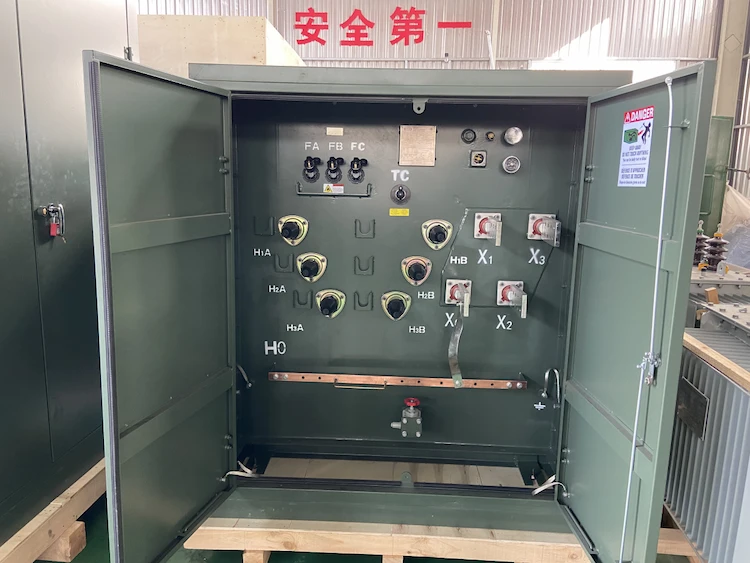
What will be the effect of the reverse connection of the three-phase power of the transformer?
Transformers have three-phase circuits, and there are various interfaces for such three-phase circuits, and there are many ways to connect various lines.
In the process of common connection, the connection should be correctly carried out to realize the continuous improvement of the performance of the transformer.
However, these three-phase circuits of the transformer should be continuously connected correctly to improve the accuracy. But some people will ask, what will happen if the three-phase power of the transformer is reversed?
For example, for the three terminals of transformer ABC, if I connect the lines in the way of A-C B-B C-A, then the coiler at the output end will also be the law of A-C B-B C-A.
That is, if the ABC three-phase connection is reversed on the input side, the output side is also reversed.
But if the connection is reversed, it is all reversed. Generally, there will be no problem with small transformers (household power supply), and micro-transformers (several kilowatts) will be fine no matter how they are connected in reverse.
But the efficiency has dropped, but the large transformer is absolutely not allowed to reverse.
In the case of high load, the reverse connection usually produces some serious consequences of the unpredictability of the bending machine. This is not only a drop in efficiency, but also because the sequence of the phase changes the bending machine, and there are some conflicts with the magnetic structure designed by the transformer itself. , and the transformer needs to consume the energy generated by the conflict and generate severe heat, which is dangerous at this time.
Therefore, the three-phase power of the transformer must not be reversed. If it is reversed, it will be dangerous. At that time, your transformer will be in danger, and casualties will easily occur. Therefore, the transformer must be operated scientifically and connected correctly!
The Complete Guide to Ground Mounted Transformer
Here are some other articles you might enjoy:
A Complete Guide to 3 Phase Transformer
The three-phase 3 Phase Transformer is widely used to generate, transmit and distribute electrical power to industrial and commercial businesses.
A Complete Guide to Single Phase Distribution Transformer
Consumers use electricity for different industries. Transformers work to make this happen as single phase distribution transformers.
How to Wire a Push Button Switch?
Do you know how to wire a push button switch? There are many ways of wiring the same button, let me introduce you to several common wiring methods.
About Daelim
Recent Posts
10 kv Oil Filled Transformer
Fault Diagnosis and Analysis of 10 kv Oil Filled Transformer 10 kv Oil filled transformer
padmounted transformer
Padmounted Transformer in Construction Work The pad mounted transformer is widely used in electrical engineering
solar thermal power plant
Nine Q&As About The Solar Thermal Power Plant Daelim is the top Chinese brand of
No comments:
Post a Comment